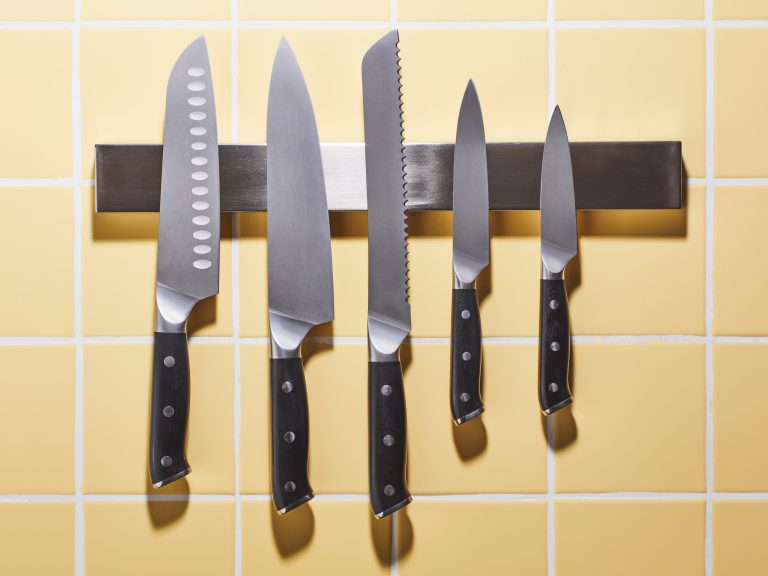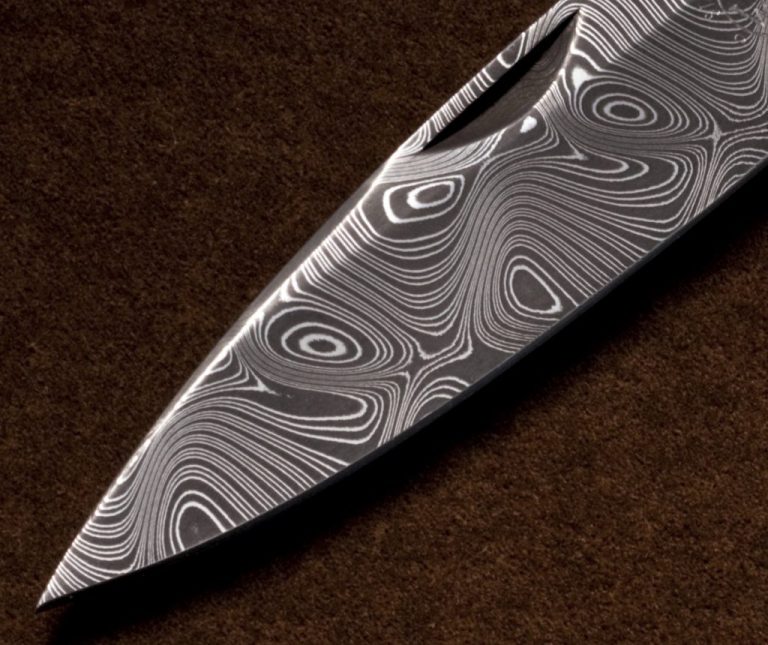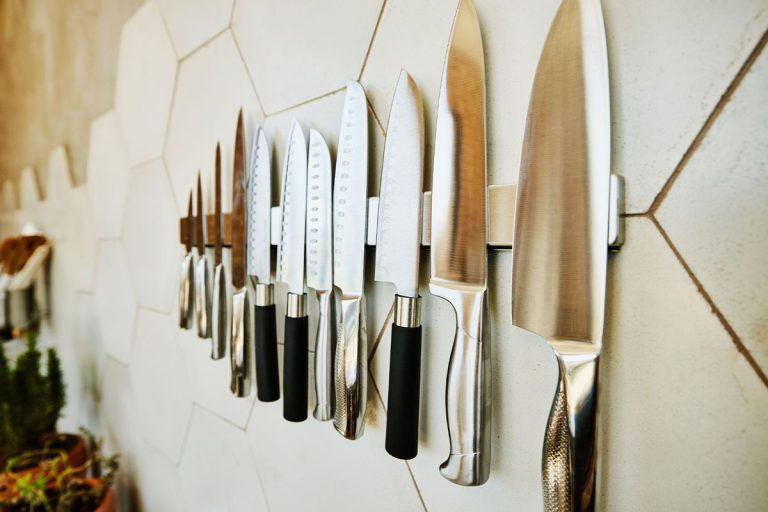Full Tang Vs. Rat-Tail Tang: What’S Best for Hunting Knives?
For hunting knives, Full Tang is the best option compared to Rat-Tail Tang. When choosing a hunting knife, it is crucial to consider the tang, the part of the blade that extends into the handle.
Full Tang knives have a solid, continuous tang that runs the length of the handle, providing durability, strength, and balance. This design ensures that the blade won’t break or separate from the handle, making it ideal for intense hunting activities.
On the other hand, Rat-Tail Tang knives have a narrow tang that tapers at the end, making them less robust and prone to breakage under heavy use. Therefore, hunters should opt for Full Tang knives to ensure reliable performance in challenging hunting situations.
Understanding The Anatomy Of Hunting Knives
Understanding the anatomy of hunting knives is essential for enthusiasts. When choosing between full tang and rat-tail tang, full tang knives are often favored for their strength and durability, making them the best option for hunting purposes.
Whether you’re an avid hunter or just starting out, understanding the anatomy of a hunting knife is crucial when choosing the best tool for your needs. Two key components that experts often focus on are the tang and its construction.
We will dive deep into the differences between full tang and rat-tail tang knives and explore their importance in hunting knife design.
Key Components Of A Hunting Knife:
- Blade: The most crucial part of a hunting knife, the blade comes in various shapes such as drop point, clip point, and tanto. The blade is responsible for the cutting edge and determines the knife’s primary function, whether it’s for skinning, butchering, or general use in the field.
- Handle: Providing a comfortable grip, the handle is typically made of materials like wood, rubber, or synthetic composites. The handle can greatly affect the overall feel and control of the knife, making it an essential consideration for hunters.
- Tang: The tang is the extension of the blade that connects the blade to the handle. It plays a critical role in the knife’s strength, stability, and durability. The tang can be designed in different styles, with full tang and rat-tail tang being the most common choices for hunting knives.
Importance Of Tang In Knife Construction:
Full Tang:
- A full tang knife has a tang that extends the entire length and width of the handle. It offers superior strength and durability, making it ideal for heavy-duty tasks and survival situations.
- Benefits:
- Enhanced Strength: With the tang running through the entire handle, a full tang knife provides maximum strength, ensuring the blade won’t break or become loose during intense use.
- Better Balance: Full tang knives create a well-balanced tool, reducing fatigue and allowing for precise control.
- Versatility: Due to their robust construction, full tang knives can handle a variety of tasks beyond hunting, making them a versatile option for outdoor enthusiasts.
Rat-Tail Tang:
- Rat-tail tang knives have a narrow, often cylindrical tang that tapers down to fit into the handle. They are typically lighter and more flexible than full tang knives.
- Benefits:
- Lightweight: The rat-tail tang design allows for a lighter overall weight, which can be advantageous when carrying the knife for long periods.
- Increased Flexibility: Rat-tail tang knives offer more flexibility than full tang knives, making them suitable for delicate tasks like filleting fish.
- Cost-Effective: Due to their simpler construction, rat-tail tang knives are often more affordable than their full tang counterparts.
Understanding the anatomy of a hunting knife, especially the tang, is essential in selecting the right tool for your hunting adventures. Whether you prioritize strength and durability with a full tang or prefer the lightweight flexibility of a rat-tail tang, both options have their own advantages.
Consider your specific needs and preferences when making your decision, as each hunting knife design caters to different use cases. So, now that you have a solid understanding of the anatomy of hunting knives, you can confidently choose the best option for your hunting expeditions.
Exploring The Full Tang Design
Exploring the Full Tang Design: Unveiling the Best for Hunting Knives. Discover the superior choice between Full Tang and Rat-Tail Tang, ensuring optimal performance and durability while out in the wild. Dive into the ultimate comparison to make an informed decision for your hunting ventures.
When it comes to choosing the perfect hunting knife, it’s essential to understand the different types of tang designs available. We’ll dive into the world of full tang knives, exploring their advantages and why they are often preferred by hunters.
So, let’s get started by understanding what exactly a full tang design entails.
What Is Full Tang?
A full tang refers to a knife that has its blade extending all the way through the handle, with the handle scales securely attached to either side of the tang. This design ensures that the knife is one solid piece of metal, from the tip of the blade to the end of the handle.
Now that we have a basic understanding of full tang knives, let’s delve into their advantages.
Advantages Of Full Tang Knives
Full tang knives offer several benefits that make them highly desirable for hunting and outdoor activities. Here are some advantages you can expect when choosing a full tang knife:
- Enhanced Durability and Strength: With the blade and handle made from a single piece of metal, full tang knives are incredibly robust and durable. This design eliminates the risk of the blade separating from the handle during intense tasks, ensuring that your knife stays reliable in challenging hunting situations.
- Better Balance and Control: One of the noticeable advantages of full tang knives is their superior balance and control. The weight distribution along the entire length of the knife allows for precise handling, making it easier to perform intricate tasks such as skinning or gutting. The solid construction of full tang knives provides a comfortable grip, ensuring optimal control and reducing the risk of accidents.
- Versatility in Outdoor Activities: Full tang knives are known for their versatility in various outdoor activities, making them a popular choice among hunters, campers, and survivalists. The solid construction and strength of the full tang design enable these knives to handle a wide range of tasks, from chopping wood to preparing meals, making them a reliable and multifunctional tool in the wilderness.
Full tang knives offer undeniable advantages for hunting and outdoor enthusiasts. Their robust construction, improved durability, better balance, and versatility make them a reliable choice in challenging situations. Whether you need a dependable tool for hunting, camping, or general outdoor activities, a full tang knife is an excellent option that ensures maximum performance and longevity.
So, next time you’re in the market for a hunting knife, consider the advantages of a full tang design and make an informed decision. Happy hunting!
Examining The Rat-Tail Tang Design
The Rat-Tail Tang design in hunting knives is worth examining alongside the Full Tang design to determine the best choice. Consider the durability and functionality of each design for optimal performance in hunting tasks.
When it comes to choosing a hunting knife, understanding the different tang designs is crucial. While the full tang design is widely known and admired for its strength and durability, the rat-tail tang design offers its own unique set of advantages and disadvantages worth considering.
In this section, we will dive deep into examining the rat-tail tang design, exploring what it is and outlining its pros and cons for hunting knives.
What Is Rat-Tail Tang?
Before we delve into the pros and cons, let’s first understand what a rat-tail tang is. Unlike a full tang design where the tang extends throughout the length of the handle, a rat-tail tang is a much narrower and slender extension that tapers towards the end.
It resembles the shape of a rat’s tail, hence the name. This tang design is commonly used in lightweight knives where weight reduction is prioritized.
Here are the pros and cons of rat-tail tang knives:
Pros Of Rat-Tail Tang Knives
- Lightweight: One of the primary advantages of a rat-tail tang design is its lightweight nature. These knives are designed to be agile and easy to maneuver, making them an ideal choice for hunters who value mobility.
- Versatility: Rat-tail tang knives are often paired with shorter blades, resulting in a versatile tool. They excel in tasks that require precision and finesse, such as skinning or detailed carving.
- Ease of Use: Due to their lightweight and compact design, rat-tail tang knives are comfortable to carry for extended periods. They are less likely to cause fatigue or strain during prolonged use.
Cons Of Rat-Tail Tang Knives
- Limited Stability: Compared to full tang knives, rat-tail tang knives lack the same level of stability and strength. The slim design of the tang leaves it more vulnerable to breaking or snapping, especially during heavy use or encounters with tough materials.
- Reduced Durability: The minimalist construction of rat-tail tang knives may affect their overall durability. They are less suited for heavy tasks that demand a higher level of resilience. Constant stress on the narrow tang can lead to premature wear and potential failure over time.
Rat-tail tang knives offer a lightweight and agile design that can be advantageous for certain hunting situations. Their versatility and ease of use make them suitable for precise tasks. However, it’s important to consider the limited stability and reduced durability associated with this tang design.
For those seeking a knife that can withstand heavy-duty applications and provide long-term reliability, other tang designs, such as the full tang, may be more suitable. Choose wisely based on your intended use and preferences, ensuring that your hunting knife aligns with your specific needs.
Comparing Full Tang And Rat-Tail Tang For Hunting Knife Performance
Deciding between a full tang and a rat-tail tang for your hunting knife? Discover which is best for performance and durability. Compare the benefits of each tang style to make an informed choice for your hunting needs.
As hunting enthusiasts, we understand the importance of having a reliable and high-performing knife when venturing into the great outdoors. When it comes to selecting the right hunting knife, the tang, or the portion of the blade that extends into the handle, plays a crucial role in the knife’s overall strength and performance.
In this blog post, we will compare two popular tang types – full tang and rat-tail tang – and evaluate their suitability for hunting tasks. So, let’s dive in and explore the strengths and weaknesses of these tang styles.
Strength And Durability In Outdoor Environments:
- Full Tang:
- A full tang knife is crafted from a single piece of metal that extends the entire length of the handle. This design offers exceptional strength and stability.
- The continuous metal construction of a full tang knife ensures superior durability, making it less prone to breakage or bending during demanding hunting tasks.
- Rat-Tail Tang:
- In contrast, a rat-tail tang knife features a thin tang that tapers towards the end, resembling a rat’s tail. This design is lighter and allows for a more streamlined profile.
- While rat-tail tang knives are lighter and more maneuverable, they lack the same level of strength and durability as full tang knives. The thin tang can be susceptible to snapping or bending under heavy pressure.
Precision And Control During Hunting Tasks:
- Full Tang:
- The solid construction of a full tang knife provides excellent balance and stability, allowing for precise cuts and controlled movements.
- With its robust tang extending through the handle, a full tang knife offers a firm grip, minimizing the risk of slippage and enhancing control during intricate hunting tasks.
- Rat-Tail Tang:
- A rat-tail tang knife’s lighter weight and slimmer profile can provide increased agility and maneuverability, allowing for quick, nimble movements.
- However, due to its narrower tang, a rat-tail tang knife may lack the same level of grip and control as a full tang knife, posing challenges when executing precise cutting or skinning techniques.
Adaptability For Different Hunting Styles:
- Full Tang:
- Full tang knives are known for their versatility and resilience, making them suitable for a wide range of hunting styles and environments.
- Whether you’re field dressing game, chopping firewood, or performing other campsite tasks, a full tang knife can handle the demands of various hunting scenarios with ease.
- Rat-Tail Tang:
- Rat-tail tang knives are often favored for their lightweight and compact nature, which makes them ideal for hunters who prioritize portability and convenience.
- This tang type is particularly popular among hunters who engage in lightweight pursuits, such as hiking or backpacking, where minimalism is key.
When considering the tang type for your hunting knife, it’s essential to assess your specific requirements and preferences. While a full tang knife offers unparalleled strength and durability, a rat-tail tang knife excels in terms of agility and portability. Ultimately, the choice between the two tang styles depends on your hunting style, the tasks you perform, and the level of durability and control you seek.
Factors To Consider When Choosing Between Full Tang And Rat-Tail Tang
Choosing between full tang and rat-tail tang for hunting knives involves considering factors like durability, balance, and overall strength. The decision should be based on personal preference, intended use, and the specific requirements of your hunting activities.
When it comes to selecting a hunting knife, the type of tang is a crucial factor to consider. The tang refers to the portion of the blade that extends into the handle, providing stability and strength. Two common types of tangs used in hunting knives are full tang and rat-tail tang.
Each has its own advantages and disadvantages, so let’s explore the key factors to help you make an informed decision.
Intended Use And Outdoor Activities:
- Full Tang:
- Exceptional Durability: With a solid piece of metal extending through the entire length of the handle, full tang knives offer superior stability and strength. They can withstand heavy-duty tasks and demanding outdoor activities.
- Versatility: The robust construction of full tang knives makes them well-suited for a wide range of outdoor activities beyond hunting, such as camping, survival situations, and bushcrafting.
- Reliability: Due to their solid design, full tang knives are less prone to breakage or failure, making them a reliable choice for hunters who require a dependable tool that can withstand challenging conditions.
- Rat-Tail Tang:
- Lightweight and Maneuverability: Rat-tail tang knives feature a narrow, tapered extension that extends into the handle. This design results in a lighter weight knife, ideal for those who prioritize agility and maneuverability in their hunting knife.
- Precision and Control: The slim profile of rat-tail tang knives offers enhanced precision and control during intricate tasks such as skinning or field dressing game.
- Everyday Carry: The compact size and reduced weight of rat-tail tang knives make them a popular choice for hunters who prefer a versatile knife that can be easily carried on a daily basis.
User Experience And Comfort:
- Full Tang:
- Enhanced Grip and Stability: The solid construction of full tang knives allows for a more secure grip, reducing the risk of slippage while handling the knife. This adds an extra layer of safety during intense cutting or chopping activities.
- Reduced Hand Fatigue: The weight distribution provided by the full tang design helps alleviate hand fatigue during prolonged and repetitive cutting tasks.
- Ergonomic Handle Options: Full tang knives often offer a wider range of handle designs, allowing hunters to select one that best fits their hand size and grip preference.
- Rat-Tail Tang:
- Improved Maneuverability: The slender design of rat-tail tang knives enhances maneuverability and control, particularly in tight or delicate situations.
- Compact and Lightweight: The reduced weight and smaller profile of rat-tail tang knives contribute to a more comfortable and unobtrusive carrying experience.
- Balanced Handling: Despite their smaller size, well-balanced rat-tail tang knives can provide excellent control and balance when correctly designed.
Budget And Cost-Effectiveness:
- Full Tang:
- Longevity and Durability: Full tang knives are renowned for their durability and can often withstand more rugged use without experiencing failures or breakage. This longevity can make them a cost-effective choice in the long run.
- Higher Price Range: Due to their solid construction and enhanced strength, full tang knives tend to be pricier compared to knives with a rat-tail tang. However, the investment may be worth it for those who require a long-lasting, reliable tool.
- Rat-Tail Tang:
- Affordability: Rat-tail tang knives are generally more affordable compared to full tang options, making them suitable for budget-conscious hunters or those who need a backup or secondary knife.
- Limited Heavy-Duty Capability: Although rat-tail tang knives are perfect for everyday tasks and light-duty cutting, they may not maintain their integrity under extreme pressure or heavy use.
Consider these factors carefully when selecting a hunting knife. Whether you prioritize durability, maneuverability, comfort, or cost-effectiveness, choosing between full tang and rat-tail tang will greatly impact your overall hunting experience. Select the tang type that aligns with your needs, and always prioritize quality and reliability when making your decision.

Credit: www.amazon.com
Expert Recommendations For Hunting Knife Selection
When selecting a hunting knife, it’s important to consider the tang type. Full tang knives offer superior strength and durability, while rat-tail tang knives may be more lightweight and maneuverable. Choose the option that best suits your specific hunting needs for a successful hunting experience.
Full Tang Vs. Rat-Tail Tang: What’S Best For Hunting Knives?
When it comes to hunting, having the right tools is crucial. One of the most important tools for any hunter is a reliable hunting knife. However, with so many options available, it can be challenging to determine which type of tang is best suited for your needs.
In this blog post, we will explore the differences between full tang and rat-tail tang knives and provide expert recommendations to help you make an informed decision.
Application-Specific Recommendations:
When selecting a hunting knife, it’s essential to consider the specific tasks and conditions you will encounter during your hunting adventures. Different tang styles offer distinct advantages that cater to various applications. Here are some recommendations based on typical hunting scenarios:
- General-purpose hunting: If you are looking for a versatile hunting knife that can tackle a wide range of tasks, a full tang knife is your best bet. Its solid construction provides durability, strength, and stability, allowing you to perform heavy-duty tasks such as field dressing, skinning, and quartering with ease.
- Precision hunting: For tasks that require precision and finesse, such as caping or detail work, a rat-tail tang knife is a suitable choice. Its lightweight design and slender profile make it easier to maneuver, giving you better control and accuracy during delicate tasks.
- Survival situations: If you anticipate being in extreme survival situations where your knife might endure heavy abuse, a full tang knife is the safer option. Its robust build ensures that the blade and handle remain intact even under intense pressure, making it reliable in emergency situations.
Consideration Of Material And Blade Type:
Besides the tang style, the material and blade type of a hunting knife are equally critical factors to consider. Here are some recommendations based on different materials and blade types:
- Materials:
- Stainless steel: Stainless steel is an excellent choice for a hunting knife due to its resistance to rust and corrosion. It is easy to maintain and ideal for hunters who frequently encounter moisture or wet conditions.
- Carbon steel: Known for its exceptional sharpness and edge retention, carbon steel is a popular choice among hunting enthusiasts. However, it requires more maintenance to prevent rust and corrosion, making it better suited for hunters who are willing to invest time in upkeep.
- Blade Types:
- Drop-point: The drop-point blade is a common choice for hunting knives due to its versatility and durability. It offers a strong, sharp point and a curved edge, making it suitable for a wide range of hunting tasks.
- Clip-point: The clip-point blade features a thinner, sharper point, making it ideal for detail work and precision cutting. However, it may be less suitable for heavy-duty tasks compared to the drop-point blade.
Remember, the choice between full tang and rat-tail tang, as well as the material and blade type, ultimately depends on your specific hunting needs and preferences. Take the time to evaluate your requirements, and consider trying out different options to find the perfect hunting knife that suits you best.
Frequently Asked Questions For Full Tang Vs. Rat-Tail Tang: What’S Best For Hunting Knives?
Are Full Tang Knives Better?
Yes, full tang knives are better because they provide strength, durability, and excellent balance for precise cutting.
Why Should Knives Have A Full Tang?
Knives should have a full tang for better balance, durability, and strength during cutting tasks.
Why Is A Full Tang Knife Better Than A Partial Tang Knife?
A full tang knife is better because it provides stronger durability and stability for heavy-duty tasks.
What Is A Full Tang Hunting Knife?
A full tang hunting knife is a type of knife where the blade extends throughout the entire handle, providing strong and durable construction for hunting tasks.
Conclusion
When it comes to choosing between a full tang and rat-tail tang for hunting knives, the decision ultimately depends on personal preference and the specific needs of the hunter. Full tang knives offer superior strength and durability, making them ideal for heavy-duty tasks and ensuring the blade won’t snap or break.
On the other hand, rat-tail tang knives provide a lighter and more balanced feel, making them suitable for precision cutting and maneuverability. While both types have their advantages, it’s essential to consider the type of hunting you’ll be doing and the conditions you’ll encounter.
Additionally, it’s crucial to invest in a high-quality knife that is properly maintained to maximize its lifespan and effectiveness. By carefully evaluating the options and selecting a knife that suits your unique needs, you can ensure a successful and enjoyable hunting experience.






